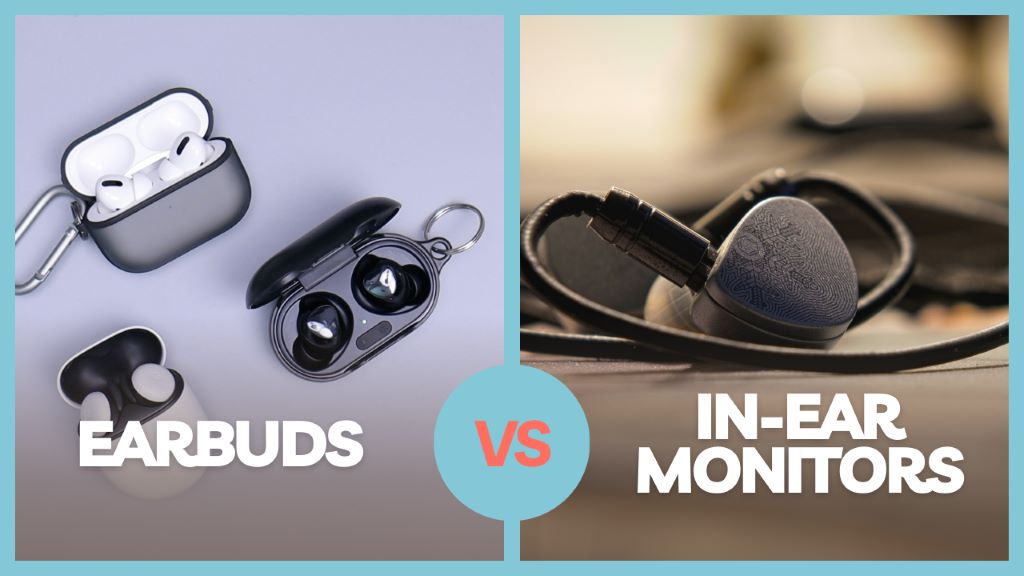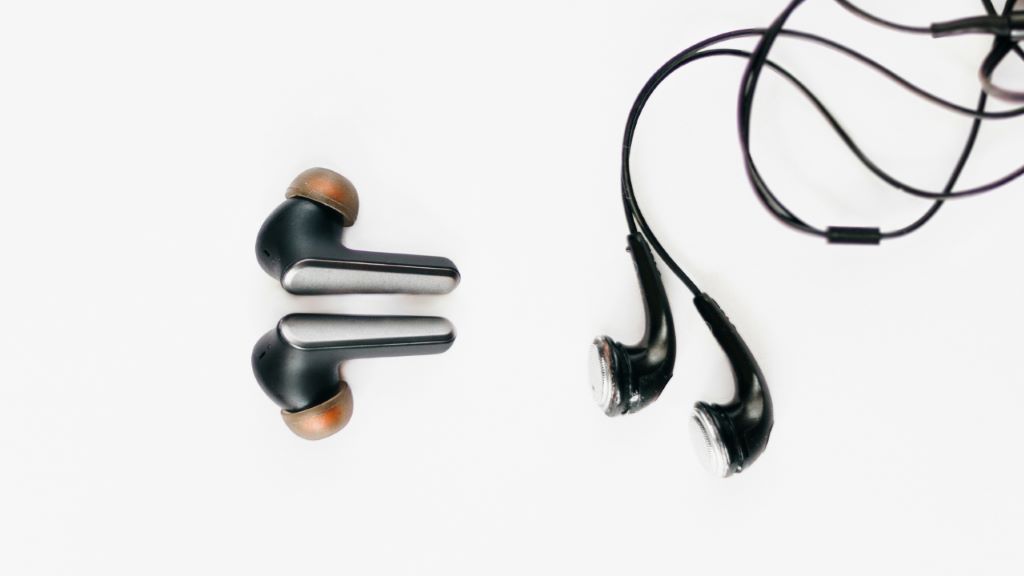We’ve spent a lot of time and effort researching and comparing earbuds and in-ear monitors (IEMs). Our goal is to provide you with honest and thorough insights to help you make an informed decision.

Here’s a breakdown of what you’ll find in this article:
- Comfort Comparison
- Sound Isolation Performance
- Sound Quality Comparison
- How to Choose the Right One for You
Now, let’s dive into the detailed comparison between earbuds and in-ear monitors (IEMs).
Comfort Comparison
When comparing earbuds and in-ear monitors (IEMs), comfort is a crucial factor. Both have significant differences in ergonomic design and wired versus wireless options.
Earbuds sit outside the ear canal, making them lightweight and easy to wear and remove. But, they may be less stable during physical activities. In-ear monitors (IEMs) fit inside the ear canal. So providing a secure fit and superior noise isolation. Custom In-Ear Monitors (CIEMs) offer outstanding comfort and stability. They achieve this by being tailored to fit the user’s ear canal. This personalized fit ensures that the earphones fit comfortably, providing a pleasant feel. This snug fit enhances comfort, especially during prolonged use, by minimizing movement and pressure on the ears.
Most earbuds today are wireless, offering greater freedom of movement. But, some may be heavier due to built-in batteries, potentially affecting long-term comfort. IEMs are predominantly wired, making them lighter and more suitable for prolonged use.
Sound Isolation Performance
When it comes to sound isolation, in-ear monitors (IEMs) and earbuds use different mechanisms.
In-ear monitors (IEMs) use a physical barrier for sound isolation. They fit into the ear canal, creating a seal that blocks external noise and enhances the listening experience. The snug fit of in-ear monitors (IEMs) enhances bass response by reducing sound leakage. In contrast, earbuds usually use dynamic drivers for sound production. While earbuds may be equipped with silicone or foam tips for passive noise isolation. But their main reliance is on increasing the volume to mask background noise. This means that they often must have higher volume levels to block out surrounding sounds. But when in noisy environments. Their ability to isolate sound may not be as effective as in-ear monitors (IEMs).
Sound Quality Comparison
In-ear monitors (IEMs) come with wired connections. These connections ensure stable and direct transmission of audio signals from the source device. This stability contributes to better sound quality and reliability. This leads to better sound quality with minimal loss or interference. But, earbuds are mostly wireless, relying on Bluetooth technology for audio transmission. However, even with improvements, wireless connections might not be as reliable or deliver the same quality as wired ones.
Both wired and wireless connections use analog or digital formats for audio transmission. Digital connections have benefits like better signal quality and noise reduction. For Example USB or Lightning cables. Wireless earbuds use Bluetooth codecs to determine audio quality. For Example AAC, aptX, and LDAC. Higher-quality codecs like aptX HD and LDAC provide CD-quality sound.
How to Choose the Right One for You

When deciding between earbuds and in-ear monitors (IEMs). Should think about their design and who they’re made for. Earbuds are usually wireless and made for everyday use, great for short listening times. In-ear monitors (IEMs) are wired and made for pros and audio fans. They offer excellent sound quality and noise isolation. Custom In-Ear Monitors (CIEMs) offer a personalized fit.
IEMs can cause earwax buildup due to their deep fit and need regular cleaning. Earbuds, which sit outside the ear canal, still need maintenance. Earbuds are generally more comfortable for short-term use. They offer convenience and ease, particularly during brief listening sessions. In contrast, in-ear monitors (IEMs) provide a secure fit and maintain sound quality over longer periods. This stability ensures consistent audio performance during extended use.
What to Do Next?
Now that you’ve acquired knowledge about earbuds and in-ear monitors (IEMs). Then take a look at our detailed top picks guides. These guides will help you choose the perfect audio option to match your needs and likes.



